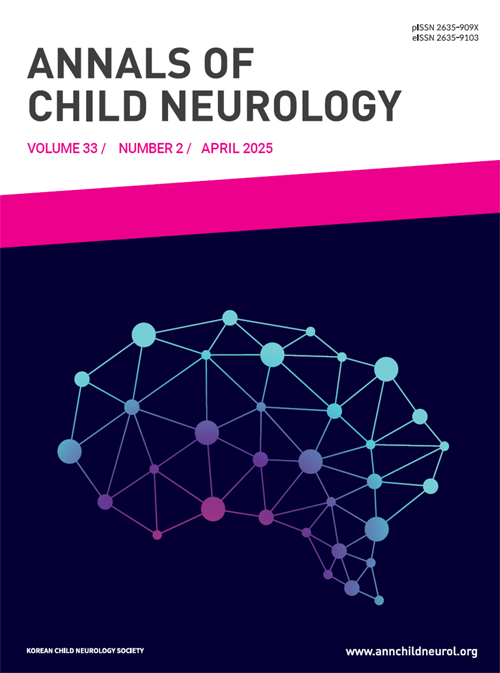Genotype-Phenotype Correlations and Functional Outcomes in Pediatric Patients with KCNQ2-Related Epilepsy: A Multicenter Observational Study in Korea
- 대한소아신경학회
- Annals of Child Neurology(구 대한소아신경학회지)
- vol.33 no.2
-
2025.0448 - 55 (8 pages)
-
DOI : 10.26815/acn.2024.00787
- 0

Purpose: Potassium voltage-gated channel subfamily Q member 2 (KCNQ2)-related epilepsy, caused by mutations in the KCNQ2 gene, encompasses a spectrum of epileptic phenotypes, ranging from self-limited epilepsy to severe developmental and epileptic encephalopathy (DEE). Although the mutational background of these disorders has been characterized, predicting outcomes based solely on genetic variants remains challenging. Methods: This multicenter observational study investigated the clinical features, genotype-phenotype correlations, and comorbidities in pediatric patients with KCNQ2-related epilepsy in Korea. Conducted across three tertiary hospitals, the study enrolled 20 pediatric patients with genetically confirmed KCNQ2-related epilepsy. Data were collected from medical records, including demographic information, age at seizure onset, types of seizures, comorbidities, and treatment history. Results: Of the 20 patients enrolled, nine had self-limited epilepsy, while 11 had DEE. Missense mutations were more prevalent in the DEE group, whereas truncation mutations were associated with milder forms of epilepsy. Although 75% of cases achieved effective seizure control, 55% of patients exhibited comorbidities such as intellectual disability and neuropsychiatric disorders. Genotype-phenotype correlations revealed variability in clinical outcomes, with specific mutations in similar regions resulting in different phenotypes. Conclusion: This study highlights the complexity of KCNQ2-related epilepsy, demonstrating that genotype-phenotype correlations are not straightforward and may be influenced by genetic modifiers, environmental factors, or dominant negative effects. While seizure control often improves, neurodevelopmental challenges may persist, underscoring the need for therapeutic approaches that address both seizure management and developmental support. Further research into the relevant non-genetic factors is essential to enhance the understanding and treatment of KCNQ2-related epilepsy.
Introduction
Materials and Methods
Results
Discussion
References
(0)
(0)